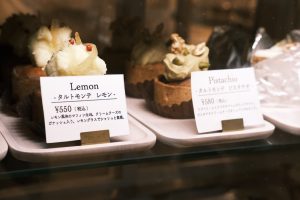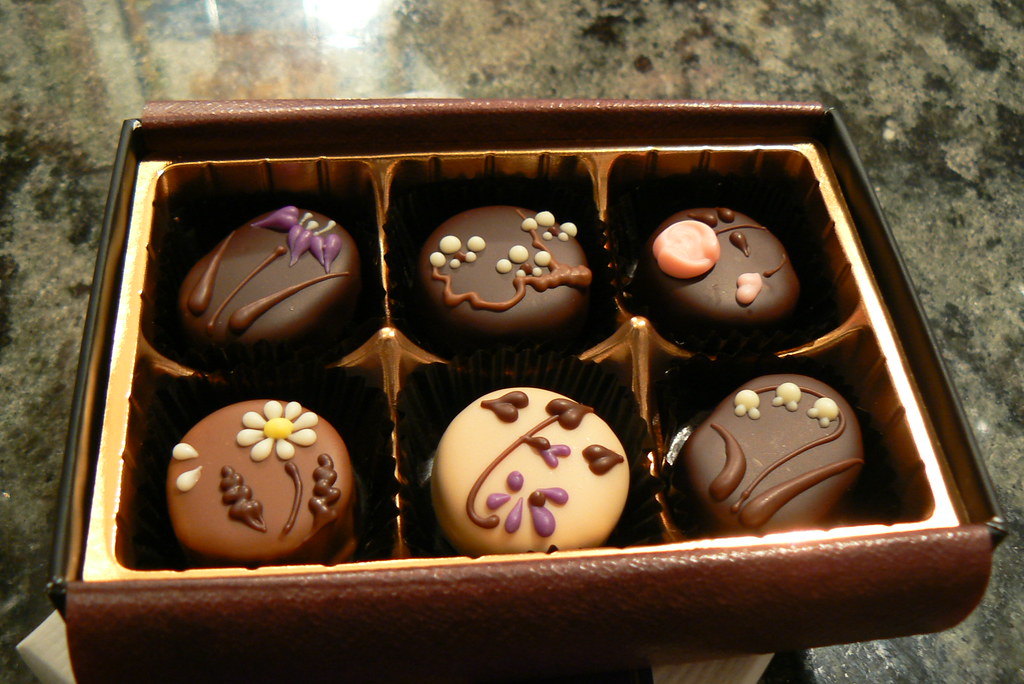Japan has gained recognition not only for its traditional arts and cuisine but also for its unique and thriving chocolate industry. Japanese chocolates have captivated the taste buds of chocolate enthusiasts worldwide with their diverse flavors, high-quality ingredients, and the blend of tradition and innovation. In this article, we will explore the rich confectionery culture of Japanese chocolate, from its overview and popular brands to its unique flavors, cultural significance, historical background, sustainability efforts, and the demand for chocolate in Asia.
Overview of the Japanese Chocolate Industry
The Japanese chocolate market holds the largest market value in the country’s confectionery sector. With a wide range of chocolate brands and products, Japan’s chocolate industry is considered high potential in the Asia-Pacific region. Meiji Holdings Co Ltd, Lotte Co. Ltd, Ezaki Glico co. Ltd, Morinaga & Co., Ltd., and Nestle are the top leading chocolate companies in Japan. These companies have established a strong presence and enjoy a loyal consumer base.
Meiji Holdings Co Ltd stands as the leading company in Japan’s chocolate industry with its popular brands like Milk Chocolate, Galbo, and Almond Chocolate. Lotte Co. Ltd, known for brands like Lotte and Zero, also holds a significant market share in Japan’s chocolate market. These brands have successfully captured the hearts of consumers with their high-quality chocolates and innovative flavors.
For example, Meiji’s Milk Chocolate is a classic favorite that offers a smooth and creamy taste. Lotte’s chocolate, on the other hand, offers a wide range of flavors such as strawberry, green tea, and caramel, providing a variety of options to suit different preferences. These brands have gained recognition for their commitment to quality and their ability to adapt to evolving consumer tastes.
Popular Japanese Chocolate Brands



In Japan’s chocolate market, several brands have become household names and enjoy a loyal consumer base. Meiji, Lotte, Nestle, Morinaga, and Gaba are among the top brands in Japan’s chocolate industry. These brands have successfully established a strong presence and offer a wide range of products to cater to different tastes.
Meiji’s Milk Chocolate is an iconic brand that has been loved by Japanese consumers for decades. Its smooth texture and rich flavor make it a popular choice for chocolate enthusiasts. Lotte, another prominent brand, offers a variety of products, including the famous Ghana Chocolate, known for its rich and intense cocoa flavor. Nestle, a global chocolate giant, has also made its mark in the Japanese market with its KitKat brand, which offers unique flavors such as matcha, sake, and wasabi.
These popular brands not only focus on taste but also pay attention to packaging and presentation. The meticulous packaging and eye-catching designs reflect the Japanese attention to detail and aesthetics. This emphasis on quality and presentation has contributed to the success and popularity of these brands in the Japanese chocolate market.
Unique Flavors and Ingredients Used in Japanese Chocolate
One of the distinguishing features of Japanese chocolate is the wide array of flavors and ingredients it offers.Traditional Japanese ingredients are often incorporated into chocolate, creating a fusion of flavors that is both unique and delightful. Matcha, a finely ground green tea powder, is a popular ingredient in Japanese chocolate. It adds a distinct earthy and slightly bitter taste to the sweetness of chocolate.
Another traditional Japanese ingredient used in chocolate is yuzu, a citrus fruit known for its fragrant aroma and tangy flavor. The combination of yuzu and chocolate creates a refreshing and citrusy taste experience. Sake, a traditional Japanese rice wine, is also used in chocolate-making, infusing it with a subtle and complex flavor profile.
In addition to traditional ingredients, Japanese chocolatiers are known for their innovative flavors. Wasabi, a pungent and spicy condiment commonly associated with sushi, has found its way into chocolate bars. The combination of the spiciness of wasabi with the sweetness of chocolate creates a unique and unexpected taste sensation. Soy sauce, another staple condiment in Japanese cuisine, is also being used in chocolate to add a savory and umami flavor. Cherry blossom, a symbol of spring in Japan, is another popular flavor that adds a floral and delicate touch to chocolate.
One example of a unique flavor combination is Morinaga’s wasabi-flavored chocolate. This chocolate bar combines the spiciness of wasabi with the sweetness of chocolate, creating a surprising and delightful taste experience. The use of innovative flavors and high-quality ingredients contributes to the uniqueness of Japanese chocolate and sets it apart from chocolates produced in other countries.
Cultural Significance of Chocolate in Japan
Chocolate holds a cultural significance in Japan beyond its taste.It is seen as a luxury item and a symbol of indulgence. The emphasis on quality and craftsmanship has led to the rise of artisanal chocolate, which has surpassed mass-market offerings in popularity. Artisanal chocolate brands, such as Chocolate Design, focus on using high-quality ingredients and meticulous techniques to create chocolates that are not only delicious but also visually appealing.
In Japanese gift-giving culture, chocolate plays a significant role, particularly on Valentine’s Day and White Day. On Valentine’s Day, it is customary for women to give chocolates to men, ranging from giri-choco (obligatory chocolates) to honmei-choco (special chocolates for loved ones). The act of giving chocolate is a way to express affection, appreciation, or social obligation. On White Day, which takes place on March 14th, men reciprocate by giving gifts to women who gave them chocolates on Valentine’s Day.
The meticulous packaging and presentation of chocolate also reflect the Japanese attention to detail and aesthetics. Chocolates are often beautifully wrapped and decorated, making them not only delicious treats but also visual delights. This focus on presentation adds to the cultural significance of chocolate in Japan and enhances the overall experience of receiving and giving chocolate as a gift.
Historical Background of Chocolate in Japan



The history of chocolate in Japan dates back to the late 19th century when it was first introduced as a foreign and exotic treat. At first, chocolate was perceived as something unfamiliar and luxurious. However, as Japan opened up to the world and embraced foreign influences, chocolate gradually gained acceptance among the Japanese population.
After World War II, chocolate production began in Japan, making it more accessible to the general public. Domestic production allowed for the development of unique flavors and products that catered to the local taste preferences. Over time, chocolate became more popular, and it has now become an integral part of Japanese confectionery culture.
Today, Japanese chocolate is a blend of tradition and innovation. Traditional flavors and ingredients are combined with new and creative ideas, resulting in a diverse range of chocolates that cater to various tastes. The historical background of chocolate in Japan has laid the foundation for the thriving chocolate industry we see today.
Sustainability in the Japanese Chocolate Market
Sustainability is considered crucial for the future of the Japanese chocolate market. As consumers become more conscious of the environmental and social impact of their choices, chocolate companies are taking steps to ensure that their products are produced sustainably. Yuraku Confectionery, a prominent Japanese chocolate company, is leading the way in promoting sustainability in the industry. In partnership with Barry Callebaut’s Cocoa Horizons program, Yuraku Confectionery is committed to supporting sustainable cocoa farming practices.
The Cocoa Horizons program, developed by Barry Callebaut, focuses on improving the livelihoods of cocoa farmers and protecting the environment. It ensures that cocoa beans used in the production of chocolate are sourced sustainably, with a focus on fair labor practices, environmental conservation, and community development. By supporting sustainable cocoa farming, Yuraku Confectionery aims to create a more environmentally friendly and socially responsible chocolate industry.
Artisan customers, such as Chocolate Design, have also embraced sustainability in their chocolate production. They use chocolate made from 100% sustainable cocoa, ensuring that their products are ethically sourced and environmentally friendly. Barry Callebaut’s European brands, Callebaut® and Cacao Barry®, offer sustainable chocolate products, providing options for consumers who are conscious of the sustainability of their choices. In the near future, Van Houten Professional is also planning to offer sustainable chocolate products, further expanding the availability of sustainable options in the market.
The focus on sustainability in the Japanese chocolate market reflects the changing consumer preferences and the industry’s commitment to reducing its environmental impact. By choosing sustainable chocolate, consumers can enjoy their favorite treats while supporting practices that prioritize the well-being of farmers, the environment, and future generations.
Single-Origin Chocolates and Ethical Production
- Single-origin chocolates have gained popularity in recent years, both in Japan and globally.
- These chocolates are made from cacao beans sourced from a specific country, allowing consumers to experience the unique flavors and characteristics of different regions.
- Single-origin chocolates are often associated with premium quality and distinct taste profiles.
- Some single-origin chocolates prioritize ethical production practices and environmental sustainability.
- They ensure that the cacao beans used in their production are sourced from farms that follow fair labor practices and promote environmental conservation.
- This includes ensuring that farmers receive fair wages, providing safe working conditions, and supporting sustainable farming methods.
- Consumer awareness about ethical issues in chocolate production, such as human rights and fair trade, is increasing.
- People are becoming more conscious of the impact their choices have on the lives of cocoa farmers and the environment.
- While the availability of single-origin chocolates in Japanese shops can be limited, knowledge about ethical production can drive consumer support for these products.
- It is important to note that not all single-origin chocolates are fairly traded or produced sustainably.
- Consumers should be mindful of the certifications and labels associated with single-origin chocolates to ensure that their choices align with their ethical values.
- By supporting ethically produced chocolates, consumers can contribute to a more sustainable and equitable chocolate industry.
Demand for Chocolate in Asia



The demand for chocolate in Asia, particularly in China and Japan, has been on the rise. Chocolate is seen as a luxury item, and its consumption has been associated with indulgence and enjoyment. Positive health news about cocoa, highlighting its potential health benefits, has helped validate chocolate as a healthier indulgence. In particular, dark chocolate, known for its high cocoa content and potential health benefits due to flavonoids, has seen significant growth in consumption.
In Japan, the demand for chocolate with healthy ingredients has been driven by health-conscious consumers. Consumers are increasingly looking for chocolates that offer not only great taste but also potential health benefits. This has led to the development of chocolates with added functional ingredients, such as collagen or vitamins, to cater to the health-conscious market.
The demand for chocolate in China has also been growing rapidly. As the middle class expands and disposable incomes rise, Chinese consumers have shown a growing appetite for premium chocolate products. The market is witnessing an increase in the consumption of high-quality chocolates, including imported brands that offer unique flavors and exquisite packaging.
The demand for chocolate in Asia is influenced by various factors, including changing consumer preferences, increasing disposable incomes, and the growing awareness of the potential health benefits of chocolate. Chocolate companies are adapting to these trends by developing new products and flavors that cater to the tastes and preferences of Asian consumers.
Japanese Chocolate Culture and History
Japanese chocolate culture reflects a blend of tradition and innovation. The cultural significance of chocolate goes beyond its taste, playing a role in various celebrations and traditions. Chocolate is often exchanged as gifts, symbolizing affection, appreciation, or social obligations. Packaging and presentation also play a crucial role, with attention to detail and aesthetics.
Various celebrations throughout the year involve the exchange of chocolate gifts. On Valentine’s Day, women traditionally give chocolates to men, ranging from giri-choco to honmei-choco. Giri-choco refers to obligatory chocolates given to friends, colleagues, or acquaintances, while honmei-choco is a special chocolate given to a loved one or someone with whom the giver has romantic feelings. The distinction between the two types of chocolate reflects the depth of relationships and the importance of expressing one’s feelings through gifts.
The meticulous packaging and presentation of chocolate reflect the Japanese attention to detail and aesthetics. Chocolates are often beautifully wrapped and decorated, making them not only delicious treats but also visual delights. The presentation of chocolate as a gift is considered an important gesture, demonstrating care and thoughtfulness.
The history of chocolate in Japan adds to its cultural significance. Chocolate was first introduced as a foreign and exotic treat in the late 19th century. Over time, it gained acceptance and popularity among the Japanese population. Domestic production began after World War II, making chocolate more accessible to the general public. Today, chocolate is an integral part of Japanese confectionery culture, blending tradition and innovation to create a unique chocolate experience.
Innovative Trends in Japanese Chocolate
Japanese chocolate manufacturers are continually exploring innovative trends to meet the evolving demands of consumers. One such trend is the “bean to bar” movement, which focuses on traceability and transparency in chocolate production. Consumers are increasingly interested in knowing the origin and journey of the ingredients used in their chocolate.
Manufacturers are also experimenting with new flavors and textures to provide consumers with unique taste experiences. For example, some brands are incorporating local ingredients, such as regional fruits or traditional herbs, into their chocolates. This showcases the diversity of Japanese flavors and creates a sense of connection with the local culture.
Seasonal offerings and nostalgia also play a significant role in Japanese chocolate marketing. Limited-edition chocolates are often released to coincide with seasonal events and festivals, such as cherry blossom season or Halloween. These chocolates create a sense of anticipation and excitement among consumers, who eagerly await these special treats.
In response to changing dietary preferences, the market is witnessing an increase in gluten-free, vegetarian, and vegan chocolate options. Manufacturers are developing products that cater to consumers with specific dietary requirements or lifestyle choices. This allows a wider range of consumers to enjoy the pleasure of chocolate without compromising their dietary needs.
In conclusion, Japanese chocolate offers a rich confectionery culture with its diverse flavors, high-quality brands, and a unique blend of tradition and innovation. The industry’s market value, sustainability efforts, and cultural significance contribute to its prominence in Japan and the Asia-Pacific region. Whether it’s enjoying a matcha-flavored chocolate or participating in the gift-giving culture, Japanese chocolate provides a delightful and culturally rich experience for chocolate lovers everywhere. The combination of traditional Japanese ingredients, innovative flavors, and attention to detail makes Japanese chocolate a truly special indulgence. As the industry continues to evolve and meet the changing preferences of consumers, we can expect even more exciting and delicious offerings from the world of Japanese chocolate.

